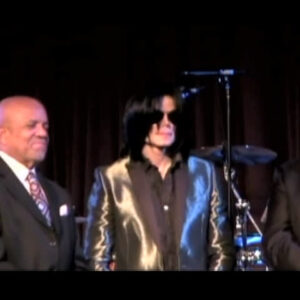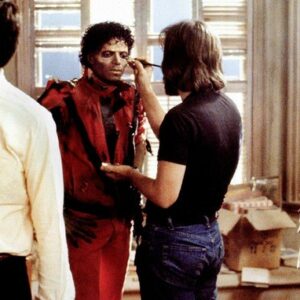In an era where music was defined by its raw and natural elements, Aretha Franklin emerged as a formidable force, not only with her soulful voice but also with her visionary approach to the evolving world of technology. Crowned the “Queen of Soul,” Aretha wasn’t just a powerhouse vocalist; she was an architect of sound, forever changing the landscape of music by embracing new tools and methods to craft her timeless masterpieces.
As the musical tides shifted, Franklin remained ahead of the curve, always seeking out new ways to evolve her artistry and connect with an ever-growing audience. Her genius wasn’t confined to her natural talent; it extended into her ability to adapt, innovate, and use technology as an ally. In a world where keeping up with the trends was crucial for sustained success, Aretha not only kept pace, but led the charge. And in doing so, she left an indelible mark on the industry, a testament to the marriage of soul and technology.
Aretha’s Early Use of Studio Technology
The 1960s and 1970s were transformative years for Aretha Franklin, as she found herself at the pinnacle of her career. But even at a time when she was celebrated for her natural talent, Aretha was quietly integrating studio technology to amplify her sound. In an era before digital, Franklin explored the possibilities of analog technologies, collaborating with studio engineers to ensure that her voice was not only heard but felt.
Working closely with producers like Jerry Wexler, Aretha pushed the boundaries of what was possible in the studio. She embraced multi-track recording, layering her vocals to create depth and texture that made her songs feel larger than life. Tracks like “Respect” and “Chain of Fools” are perfect examples of how technology, even in its early form, was used to elevate Aretha’s already monumental voice, creating an immersive listening experience that resonated with audiences across the globe.
It wasn’t just about amplifying sound; it was about creating something new. Aretha worked with sound engineers to experiment with different effects, subtle reverbs, and delays that gave her music a rich, polished feel while staying true to the grit and emotion of her live performances. Every note was a deliberate act of craftsmanship, and the technology of the time allowed her to refine that artistry to perfection.
Adoption of Digital Equipment in the 1980s
As the music industry transitioned from analog to digital in the 1980s, many artists found themselves at a crossroads—stick with the familiar or embrace the unknown. Aretha Franklin, as always, chose the latter. The rise of digital recording equipment and synthesizers presented an opportunity to evolve her sound, and Aretha seized it with both hands.
“Freeway of Love,” a hit from her 1985 album Who’s Zoomin’ Who?, exemplified Aretha’s foray into the modern age of sound. The track, laden with electronic instruments and digital production techniques, was a bold departure from the organic soul music of the 1960s. Yet, in typical Aretha fashion, it was an undeniable success. The song topped the R&B charts and broke into the top 10 of the Billboard Hot 100, showcasing Aretha’s ability to stay relevant while remaining true to her roots.
What made Aretha’s adoption of technology so groundbreaking wasn’t just her use of it—it was the way she made it her own. In her hands, synthesizers, drum machines, and digital effects became tools to enhance, not overpower, her soulful voice. She didn’t lose herself in the process; instead, she found new ways to express the depth of her artistry. The sleek, modern sound of “Freeway of Love” proved that Aretha Franklin could navigate any musical landscape and come out on top, always retaining her crown as the Queen of Soul.
Collaborations Using Advanced Tech
As Aretha moved further into the digital age, she sought out collaborations with producers and artists who were masters of high-tech music production. This wasn’t just about keeping up with trends; it was about pushing the boundaries of what was possible in the studio. Aretha had always surrounded herself with talented producers, but in the 1980s and 1990s, she began working with individuals who specialized in cutting-edge technology.
Producers like Narada Michael Walden and Luther Vandross were instrumental in helping Aretha bridge the gap between classic soul and modern R&B. These collaborations introduced fresh, contemporary sounds to Aretha’s music, yet they never felt disjointed. Tracks like “I Knew You Were Waiting (For Me),” a duet with George Michael, are perfect examples of this blend. The song features a polished, radio-friendly production that’s undeniably 1980s, but Aretha’s voice remains the beating heart of the track, transcending time and technology.
Aretha’s collaborations weren’t just limited to the studio. On stage, she embraced live sound technologies that allowed her to connect with larger audiences while maintaining the intimacy and power of her voice. Wireless microphones, advanced PA systems, and digital soundboards became staples of her live performances, ensuring that every fan, from the front row to the back of the arena, experienced the full force of her voice.
Evolution with Music Videos and Visual Effects
The 1980s saw the rise of MTV and the music video, a platform that changed how artists connected with audiences. For many artists of Aretha’s generation, this new visual medium was a foreign concept. But not for Aretha Franklin. Always an innovator, she embraced the music video as a new way to tell her story and enhance her songs.
Aretha’s music videos weren’t just a visual accompaniment to her songs—they were an extension of her artistry. Videos like “Freeway of Love” and “Jumpin’ Jack Flash” featured slick editing, creative visual effects, and dynamic storytelling that brought Aretha’s music to life in a new way. In these videos, Aretha wasn’t just a singer; she was a performer, using the latest technology to reach audiences in ways that were previously unimaginable.
The use of video technology also allowed Aretha to expand her reach beyond radio and records. Music videos became a powerful promotional tool, giving her a presence on television screens across the world. For younger audiences, who may not have grown up with her earlier work, these videos were an introduction to the Queen of Soul. And as always, Aretha’s voice, her presence, and her undeniable charisma shone through, transcending the medium and connecting with fans on a deeper level.
Legacy: Technology’s Role in Preserving and Promoting Aretha’s Music
Aretha Franklin passed away in 2018, but her music lives on, thanks in large part to the power of technology. In the years since her death, her catalog has been digitally remastered, ensuring that her music sounds as vibrant and powerful today as it did decades ago. Streaming platforms like Spotify and Apple Music have introduced Aretha’s work to new generations of listeners, allowing her legacy to continue to grow and thrive.
Beyond streaming, technology has also allowed Aretha’s music to reach fans in new and innovative ways. Virtual performances, holograms, and digital tributes have kept her presence alive in the cultural consciousness. In 2021, Aretha’s music was featured in a virtual reality concert experience, allowing fans to immerse themselves in her world like never before. The use of these technologies has not only kept her relevant but has also introduced her to new audiences who may not have been familiar with her work.
Conclusion: A Pioneer in Soul and Technology
Aretha Franklin’s use of technology was more than just a way to stay relevant—it was a testament to her visionary nature. She saw the potential in new tools and methods, not as a threat to her artistry but as an opportunity to enhance it. From the early days of analog recording to the digital revolution, Aretha embraced every technological advance, using it to push her music forward while staying true to her roots.
Her ability to balance the old and the new, the traditional and the modern, made her a pioneer not only in soul music but in the music industry as a whole. Aretha Franklin wasn’t just a Queen of Soul; she was a queen of innovation, forever changing the way we think about music, technology, and the limitless possibilities when the two come together.
And while technology may evolve, Aretha’s legacy will remain timeless, preserved through the very innovations she once championed.





